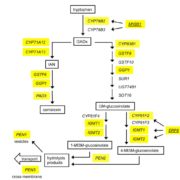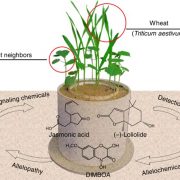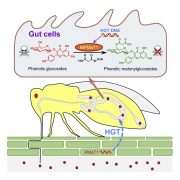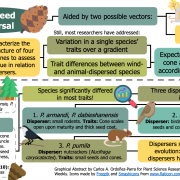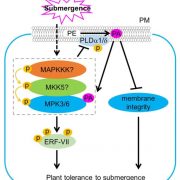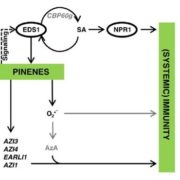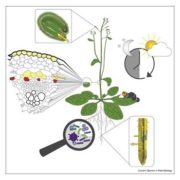Extracellular ATP acts on jasmonate signaling to reinforce plant defense
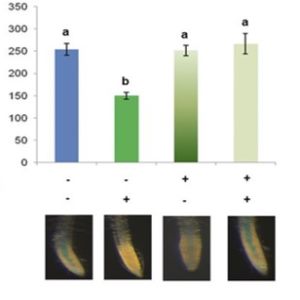 Plant Physiol. Extracellular ATP induces plant defense responses but the mechanisms involved are largely unknown. The paper by Tripathi et al. shows how extracellular ATP serves as a danger signal in plant defense and its interaction with the signalling pathways of other stress hormones, e.g. jasmonate (JA) and salicylic acid (SA). Using Arabidopsis thaliana leaves and ATP pre-treatments, the authors show the induction of resistance against the necrotrophic fungus, Botrytis cinerea which required intact P2K1, the receptor for extracellular ATP. Downstream signalling factors, after the recognition of extracellular ATP by P2K1 receptor, interact directly with (or modify) jasmonate ZIM-domain (JAZ) proteins to promote the formation of JA receptor, coronatine-insensitive1 (COI1)-JAZs complex, which coordinates ATP-JA synergism. Furthermore, ATP-activated JA signalling is an early event for the synergistic enhancement of JA-mediated plant responses. However, the event requires signalling via the second messenger trio, Ca2+, ROS, and NO and it is conceivable that ATP-induces dynamic and transient changes in the intracellular concentration of these second messengers directly impacting SA signalling. Also, during wounding, ATP-mediated NO might be involved in thioredoxin-mediated S-nitrosylation modifications of NPR1 (a key transcriptional regulator of the SA signalling pathway), therefore extracellular ATP may independently enhance JA and SA signalling. Hence this study shows the action of extracellular ATP on JA signalling. (Summary by Maria Julissa Ek-Ramos) Plant Physiol. 10.1104/pp.17.01477
Plant Physiol. Extracellular ATP induces plant defense responses but the mechanisms involved are largely unknown. The paper by Tripathi et al. shows how extracellular ATP serves as a danger signal in plant defense and its interaction with the signalling pathways of other stress hormones, e.g. jasmonate (JA) and salicylic acid (SA). Using Arabidopsis thaliana leaves and ATP pre-treatments, the authors show the induction of resistance against the necrotrophic fungus, Botrytis cinerea which required intact P2K1, the receptor for extracellular ATP. Downstream signalling factors, after the recognition of extracellular ATP by P2K1 receptor, interact directly with (or modify) jasmonate ZIM-domain (JAZ) proteins to promote the formation of JA receptor, coronatine-insensitive1 (COI1)-JAZs complex, which coordinates ATP-JA synergism. Furthermore, ATP-activated JA signalling is an early event for the synergistic enhancement of JA-mediated plant responses. However, the event requires signalling via the second messenger trio, Ca2+, ROS, and NO and it is conceivable that ATP-induces dynamic and transient changes in the intracellular concentration of these second messengers directly impacting SA signalling. Also, during wounding, ATP-mediated NO might be involved in thioredoxin-mediated S-nitrosylation modifications of NPR1 (a key transcriptional regulator of the SA signalling pathway), therefore extracellular ATP may independently enhance JA and SA signalling. Hence this study shows the action of extracellular ATP on JA signalling. (Summary by Maria Julissa Ek-Ramos) Plant Physiol. 10.1104/pp.17.01477


